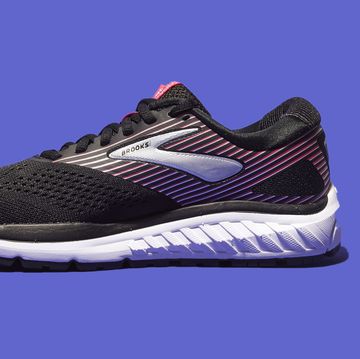In the relatively recent past, things were simple: your foot type was classified as overpronator, underpronator, or neutral, and you were supposed to get a running shoe designed for that foot type. If you got injured, it was probably because you had the wrong shoe for your foot type. At least, that was the theory -- the problem was that people still kept getting injured. Over the past few years, a number of studies (e.g. this one) have questioned whether foot type (and assigning shoes based on foot type) really makes any difference in running injury rates.
The latest study, as reported by Gretchen Reynolds in the New York Times, takes a new approach to testing the idea. Danish researchers recruited 927 non-runners who were willing to take up running, then followed them for a year. This avoids problems with pre-existing injuries and habituation to specific shoe types. The runners were all issued with identical neutral shoes (Supernova Glide 3, which were provided at reduced price by Adidas), and issued with GPS watches so their running distances could be tracked accurately and objectively. They were divided into five groups: highly supinated, supinated, neutral, pronated, highly pronated.
Here's the key figure, as published in the British Journal of Sports Medicine:
This shows the fraction of runners in each group that remained uninjured after covering a given number of kilometers. (On average, these beginner runners managed 353 km over the course of the year, and 252 of them sustained running injuries.)
From a statistical point of view, there were no differences between the groups. Here's how the authors sum up their main findings:
No significant differences in distance to first running-related injury were found between highly supinated, supinated, pronated and highly pronated feet when compared with neutral feet. In contrast, pronated feet sustained significantly fewer injuries per 1000 km of running than neutral feet.
Now, that doesn't quite match what the figure shows, since the highly pronated group seems to have a much higher injury rate. The problem is that only ~9 people (18 feet, actually -- each foot was analyzed separately since people aren't always symmetric) fell into this category. That's just too small a number to draw any conclusions from. The pronated group, on the other hand, with 122 feet, actually sustained fewer injuries than the neutral group.
So what does it all mean? This is probably the best evidence yet that you really shouldn't worry about foot type when you're choosing shoes. It's certainly still possible that pronation control (whether in shoes or orthotics) can play a role in addressing specific injuries, and it's also possible that the high injury rate of the very small group of "highly pronated" runners in this study will be replicated in future studies. But for 99% of the runners in this study, foot type doesn't seem to matter.
Where does that leave us? The authors have two main pieces of advice. First, choose a shoe that feels comfortable to you; there's evidence that perception of comfort is actually relatively sensitive guide to how compatible a shoe is with your foot. Second, pay more attention to all the non-shoe factors that lead to running injury -- most importantly, training errors. In the end, the underlying cause of virtually all overuse injuries is still the simplest: too much, too soon.
***
Follow the latest Sweat Science via Twitter, Facebook, and RSS; or buy the book!






